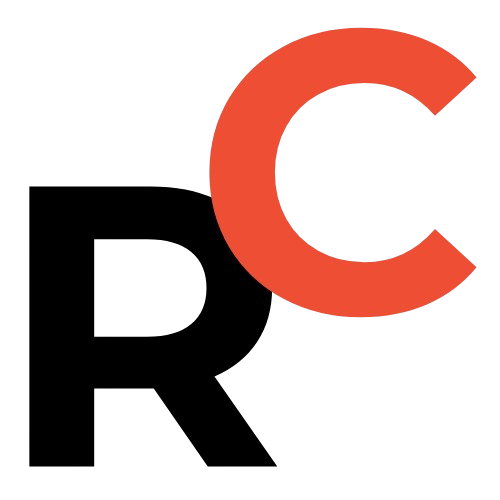Key Points
- Policy tool scale: Launched by 国家发展改革委 and partners with a total size of ¥500 billion RMB to top up project equity/capital.
- Initial deployment: 中国农业发展银行 reports the instrument has disbursed >¥100 billion RMB, supporting 562 projects so far across 数字经济, 人工智能 and consumption-related investments.
- Leverage effect: These disbursements are expected to catalyze >¥1.26 trillion RMB (≈$175.0 billion USD) in total project investment, acting as catalytic capital to attract private co-investment.
- Market impact: The tool should drive lower financing costs, stronger public-private deal flow, and improved feasibility for large-capex projects in prioritized sectors.

New policy-oriented financial tool is already shifting investment dynamics in China.
Key takeaways — new policy-oriented financial tool
- The Agricultural Development Bank of China (Zhōngguó Nóngyè Fāzhǎn Yínháng 中国农业发展银行; commonly Agricultural Development Bank of China, ADBC) reports the new policy-oriented financial instrument has disbursed > ¥100 billion RMB ($13.9 billion USD, approx.).
- The funds have supported 562 projects across core infrastructure and emerging industries, including the Digital Economy (Shùzì Jīngjì 数字经济), Artificial Intelligence (Rén Gōng Zhìnéng 人工智能), and consumption-related investments.
- The disbursements are expected to leverage total project investment of more than ¥1.26 trillion RMB ($175.0 billion USD, approx.).
- The National Development and Reform Commission (Guójiā Fāzhǎn Gǎigé Wěiyuánhuì 国家发展改革委; NDRC) and partners set up the instrument in Q4 with a total scale of ¥500 billion RMB ($69.4 billion USD, approx.), earmarked to top up project equity/capital.

Resume Captain
Your AI Career Toolkit:
- AI Resume Optimization
- Custom Cover Letters
- LinkedIn Profile Boost
- Interview Question Prep
- Salary Negotiation Agent

What was announced — policy update and allocation
The Agricultural Development Bank of China (Zhōngguó Nóngyè Fāzhǎn Yínháng 中国农业发展银行) confirmed allocations exceeded ¥100 billion RMB ($13.9 billion USD, approx.).
The instrument was established on September 30 and has already allocated funds to support 562 projects.
Targeted sectors include the Digital Economy (Shùzì Jīngjì 数字经济), Artificial Intelligence (Rén Gōng Zhìnéng 人工智能), and consumer-oriented initiatives.

Expected leverage effect — catalytic capital in action
The bank estimates these disbursements will catalyze more than ¥1.26 trillion RMB ($175.0 billion USD, approx.) in total project investment.
That projection highlights the instrument’s role as catalytic capital to attract additional public and private funding into prioritized sectors.
This implies a strong leverage multiple as the policy capital tops up equity and reduces financing gaps for large projects.

Find Top Talent on China's Leading Networks
- Post Across China's Job Sites from $299 / role, or
- Hire Our Recruiting Pros from $799 / role
- Qualified Candidate Bundles
- Lower Hiring Costs by 80%+
- Expert Team Since 2014
Your First Job Post

Policy background — why the government moved
To boost financial support for the real economy and expand effective investment in Q4, the NDRC (Guójiā Fāzhǎn Gǎigé Wěiyuánhuì 国家发展改革委) and related parties launched a policy-oriented financial tool sized at ¥500 billion RMB ($69.4 billion USD, approx.).
The full amount is earmarked to supplement project capital — effectively increasing equity buffers and improving financing viability for large-scale projects.

ExpatInvest China
Grow Your RMB in China:
- Invest Your RMB Locally
- Buy & Sell Online in CN¥
- No Lock-In Periods
- English Service & Data
- Start with Only ¥1,000

Why it matters — implications for investors, founders, and markets
Lower financing costs: State-backed equity top-ups can reduce perceived risk and borrowing costs for major infrastructure and strategic emerging-industry projects.
Private co-investment: By improving project metrics, the instrument is designed to attract private capital into sectors that otherwise face higher funding frictions.
Macro stabilization: Channeling capital to digitalization, AI, and consumption is a targeted effort to stabilize aggregate investment demand and accelerate strategic modernization.
What this means for founders and investors
- Founders in AI and digital infrastructure: Projects with demonstrated scale and policy alignment may find equity top-ups and better financing terms.
- Investors and VCs: Expect stronger public-private deal flow in prioritized verticals and opportunities for co-investment alongside policy capital.
- Project developers: The tool improves feasibility for large capex projects where equity buffers determine debt capacity and investor appetite.
Practical next steps
- Map policy priorities: Align project proposals to priority labels such as Digital Economy, AI, and consumption upgrades.
- Prepare stronger equity cases: Highlight how additional equity will reduce project financing risk and unlock follow-on private investment.
- Engage with public channels: Monitor NDRC and ADBC (Zhōngguó Nóngyè Fāzhǎn Yínháng 中国农业发展银行) communications for application windows and eligibility criteria.

Quick checklist for due diligence
- Sector fit: Is the project tagged under digitalization, AI, or consumption?
- Equity gap: Does the deal need capital to meet bankability thresholds?
- Leverage potential: Can policy capital bring in >1x private co-investment?

Linking opportunities — where to point readers next
- Link company or fund pages to ADBC (Zhōngguó Nóngyè Fāzhǎn Yínháng 中国农业发展银行) announcements for credibility and context.
- Link thematic pages on AI, digital economy, and infrastructure to show strategic alignment with the new tool.
- Link due-diligence checklists or term-sheet templates when discussing equity top-ups and co-investment structures.

References
- 农发行:新型政策性金融工具已投放超千亿元 – 央视新闻
- Agricultural Development Bank of China – 中国农业发展银行
- 国家发展改革委 – National Development and Reform Commission — new policy-oriented financial tool




![China's Financial Titans (PBOC, CSRC, NFRA) to Unveil Market Stability Policies: What Investors & Techies Need to Know for May 7th [FreshFromChina]](https://freshfromchina.com/wp-content/uploads/2025/05/China_s_Financial_Titans__PBOC__CSRC__NFRA__to_Unveil_Market_Stability_Policies__What_Investors___Techies_Need_to_Know_for_May_7th____FreshFromChina-150x150.png)